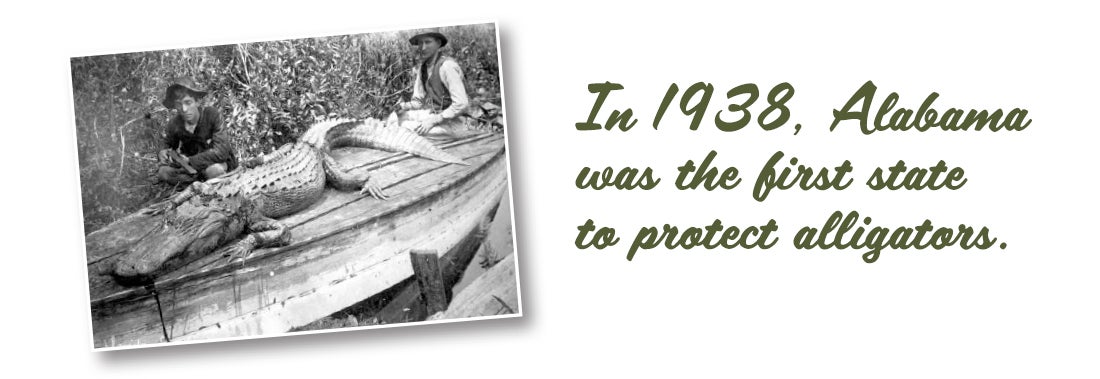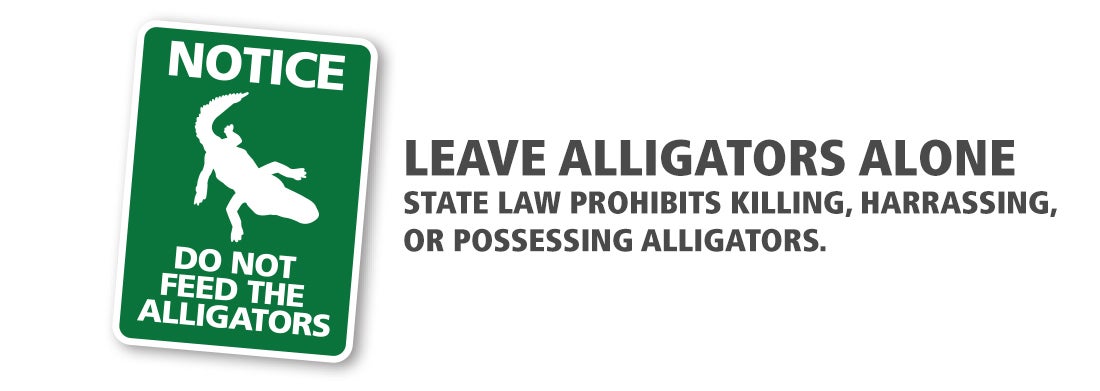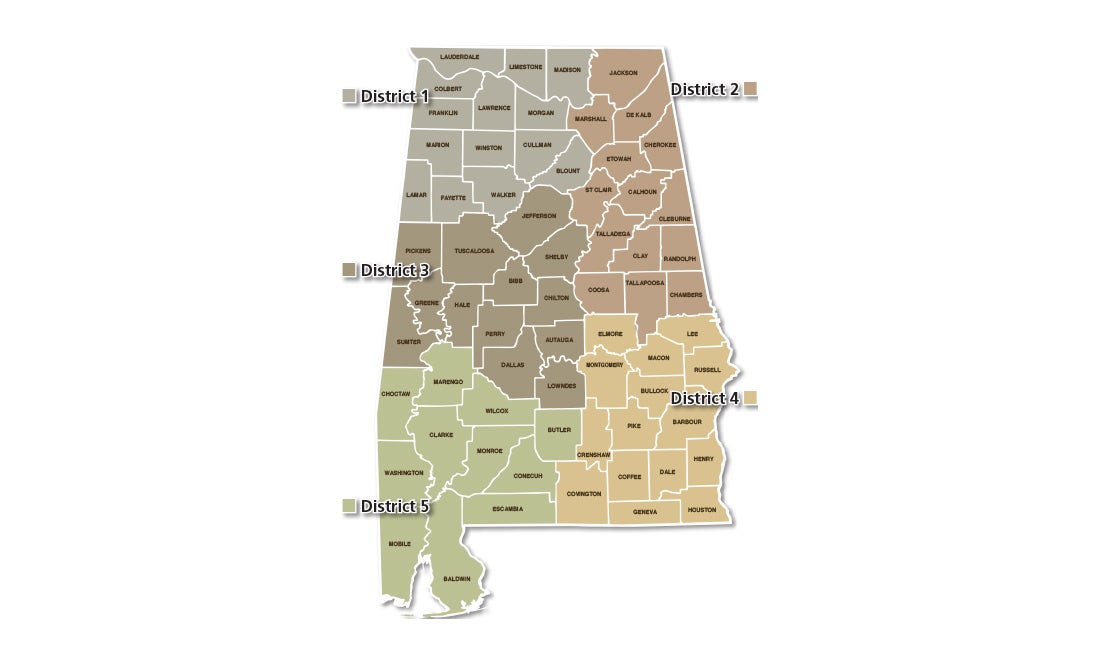
American Alligator
The American alligator (Alligator mississippiensis) is the only species of alligator that exists in Alabama.
Decline and Recovery
Unregulated alligator harvest throughout the South in the early 1900s threatened the species with extinction. Alabama played a leading role in the restoration of the American alligator—a national conservation success story.
In 1938, Alabama was the first state to protect alligators. Other states soon followed, and in 1967, the U.S. Fish and Wildlife Service placed the American alligator on the Endangered Species List.
Two decades of protection enabled the species to rebound. By 1987, it was removed from the Endangered Species List but remains a federally protected species to this day.

Habitat
Alligators are found statewide in Alabama. Higher densities of alligators occur in wetland habitats such as coastal marshes, swamps, lakes, rivers, and reservoirs. They can be found at lower densities in manmade canals, storm drains, farms ponds, parks, neighborhoods, or any area near water, natural or man-made. Alligators are also often seen basking on dry land to regulate their body temperature.
Diet
An American alligator’s diet is comprised of a wide variety of food items. Small alligators, less than 3 feet mainly feed on spiders, minnows, crawfish, shrimp, and crabs. As alligators grow larger so do their food items. Adult alligators are opportunistic and will feed on anything from fish, snakes, turtles, birds, muskrats, nutria, and otters, to raccoons, feral pigs, deer, and even other alligators. Pets are similar in size to other prey of alligators and their movements will often attract an alligator’s interest as a food item.
Living with Alligators
Alligators are an important part of Alabama’s landscape and play a valuable role in the ecology of our state’s wetlands. Alligators are a top predator species and help keep other animal populations in balance. However, with human populations continuing to expand, interaction between people and alligators can be expected. Although alligators are naturally shy of humans, they can become aggressive if harassed, provoked, or purposely fed. Understanding the natural behavior of this species can help prevent negative encounters for yourself and others.

Safety Tips
- Leave Alligators Alone – State law prohibits killing, harassing, or possessing alligators. Handling even small alligators can result in injury.
- Never Feed Alligators – Feeding an alligator is dangerous and illegal. When fed, alligators can overcome their natural wariness and learn to associate people with food. When this occurs, these alligators must be euthanized due to future safety concerns.
- Always Be Alert – When in or near fresh or brackish water, always be aware of possible encounters with alligators. Harmful encounters occur when people do not pay attention to their surroundings.
- Swim Responsibly – Alligators are most active between dusk and dawn. Avoid swimming at night, or outside of posted swimming areas.
- Watch Your Pets – Pets are similar in size to alligators' other prey, and their movements often attract an alligator’s interest. Do not allow pets to swim, exercise, or drink in or near waters that may contain alligators.
- Photograph at A Distance – Always keep safety in mind and observe and photograph alligators only from a distance.
- Don’t Throw Fish Scraps in the Water – Dispose of fish scraps properly in garbage cans at boat ramps, fish camps or when cleaning fish near water. Throwing scraps in the water attracts alligators and provides them with an easy food source.
- Seek Medical Help If Bitten – Alligator bites can result in serious infections. If bitten, seek medical attention immediately.
For more information regarding Alligators, call your district office.

District 1: 256-353-2634
District 2: 256-435-5422
District 3: 205-339-5716
District 4: 334-347-9467
District 5: 251-626-5474






